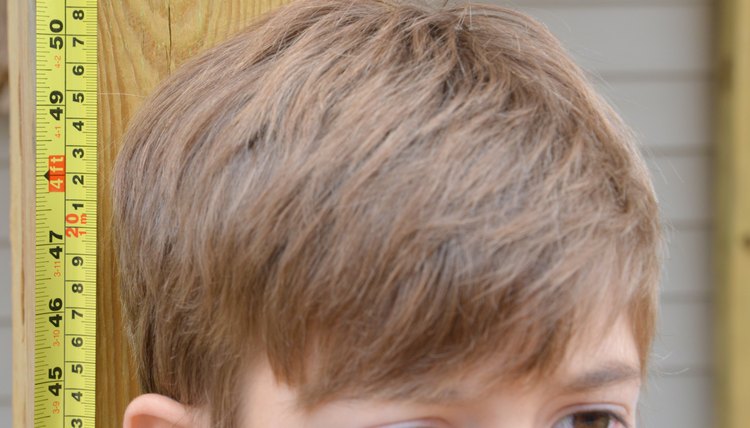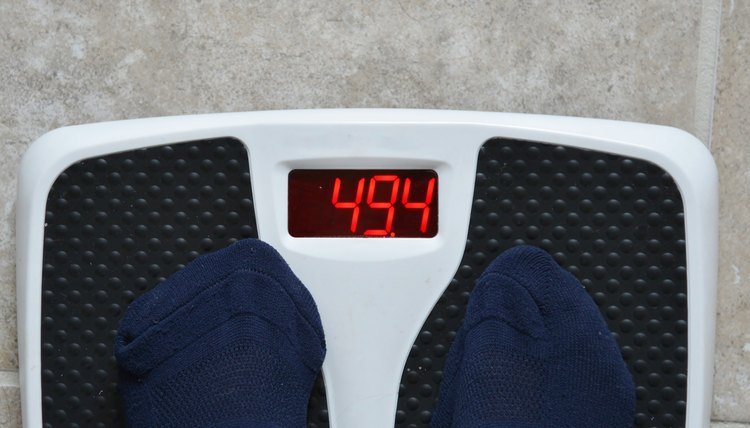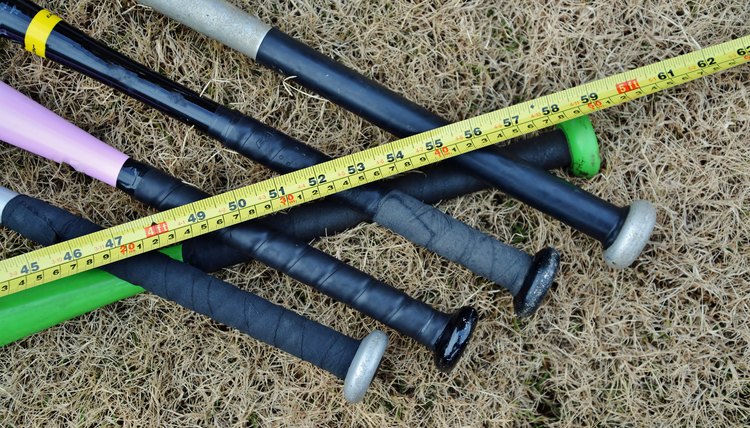How to Size Baseball Bats for Kids

As a player goes from little league baseball to high school baseball and beyond, one thing that always changes is the length and weight of the bat they use in-game. It is critical for all baseball players, but especially youth players, to use the right bat as they learn the fundamentals of the game.
Baseball bat sizing can seem like a long and frustrating process at times, but the perfect bat will allow for a younger player’s maximum bat speed, minimize their bat drop, allow them to hit the ball at its sweet spot, and instantly make them a better and more comfortable hitter at their age group.
1. Measure Height with Baseball Shoes

Lindsay Garwood/Demand Media
Measure your child's height while he is wearing his baseball shoes. Children between 3 feet and 3 feet, 4 inches tall should start with a 26-inch composite bat. Add an inch to the bat size for every 4 to 5 inches in height after the child is 3 feet, 5 inches tall. For example, a kid who is 4 foot, 1 inches should use a 28-inch bat.
Louisville Slugger, Rawlings and Marucci are often regarded as the best baseball bat brands for youth players.

Lindsay Garwood/Demand Media
Stand your child next to the bat to determine if the bat is too long and ultimately too heavy for them to use. In this case, the right size bat would be shorter in length, which would automatically drop its weight and make it a lighter bat for the child to use.
When you place the top end of the bat on the floor with the handle end matching up against your child's leg, the knob area of the bat should correspond roughly to where your child's hip is located. If the bat reaches their waist, the length of the bat is too long.
Size Bat According to Weight

Lindsay Garwood/Demand Media
You should also size a youth baseball bat according to your child's weight. Though height is a more effective way to size a kid's bat, some children are tall and thin, which throws off any size chart you might want to use. Thus, they may not be able to handle a longer, heavier bat with a thicker barrel size.
The Batter's Box, a retailer of aluminum bats, suggests that a combination of height and weight be used to size a bat. Children under 60 lbs. will generally perform well with a bat between 26 and 29 inches, depending on the child's height. Kids who weigh between 70 and 90 lbs. can safely use a 28- to 32-inch bat, with the higher end of the scale reserved for players over 5 feet tall.
Let Your Child try the Bat

Lindsay Garwood/Demand Media
Let your child try out a baseball bat in the store before you make your final decision. Comfort is a crucial factor when choosing a baseball bat, even when you are using standard height and weight recommendations.
General age recommendations are made for bat length--starting with a 24- to 26-inch bat for 5- to 7-year-olds, with a 2-inch in bat size increase per 2-year age increase -- but because kids' heights vary, the age determinations may not always be appropriate.
USA Baseball Bats vs BBCOR Baseball Bats
The main difference between USA Baseball and BBCOR bats is the drop weight. BBCOR bats have a bat standard of -3 drop weight, meaning they are only three ounces lighter than inches long.
BBCOR bats are typically required for high school and college baseball players, and they can be found at most sporting goods stores around the country.
Wood Bats
While many young players would like to ditch their tee ball bats and use wood baseball bats, it is smart to wait a few years for them to get stronger and more comfortable with composite bats first before jumping into a totally new bat design. Some youth leagues outright ban wooden bats for younger players at a certain age, but restrictions ease as they reach around 8-10 years old.
Writer Bio
Erica Roth has been a writer since 2007. She is a member of the Society of Professional Journalists and was a college reference librarian for eight years. Roth earned a Bachelor of Arts in French literature from Brandeis University and Master of Library Science from Simmons College Graduate School of Library and Information Science. Her articles appear on various websites.
